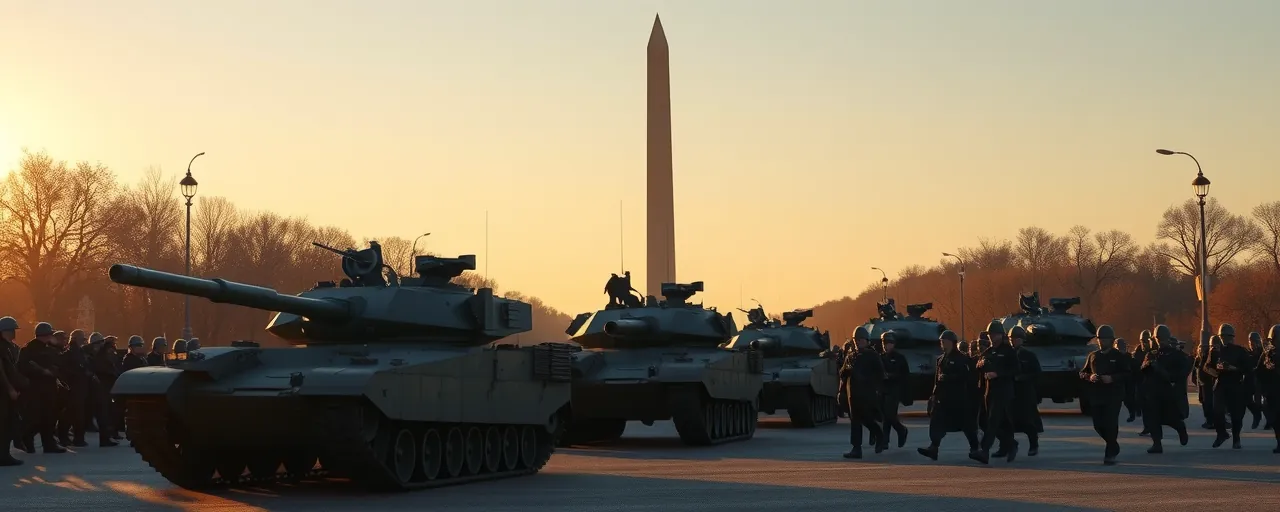A Historic Celebration Takes Shape
On June 14, 2025, Washington, D.C., is set to host a massive military parade to commemorate the U.S. Army’s 250th anniversary. The event promises a striking display, with over 6,600 soldiers, 150 vehicles including tanks and artillery, 50 helicopters, and seven military bands. Parachute demonstrations and a route stretching from Arlington, Virginia, to the heart of the capital will cap the spectacle, followed by a concert and fireworks. For many, it’s a chance to honor the Army’s legacy and the service members who’ve shaped the nation’s history.
Yet, the parade’s announcement has ignited a broader conversation. While some see it as a fitting tribute to military service, others question its scale, cost, and timing. The event, coinciding with President Donald Trump’s 79th birthday, wasn’t part of the Army’s original anniversary plans, raising eyebrows about its motivations. As planners navigate logistical hurdles and public reactions, the parade stands at the crossroads of patriotism, politics, and public spending.
A Tradition of Pride and Power
Military parades have long punctuated American history, often tied to victories or national milestones. The Grand Review of the Armies in 1865 saw 145,000 Civil War soldiers march through Washington, D.C., in a show of unity. World War I and II victories sparked similar displays, with New York’s 1942 parade drawing two million spectators. The 1991 Gulf War Victory Parade, with 8,000 troops, marked the last major national event of its kind, reflecting a nation eager to celebrate its military prowess.
These moments weren’t just about celebration; they signaled strength. During the Cold War, presidents like Eisenhower and Kennedy showcased missiles and atomic cannons in inaugural parades, projecting power amid global tensions. Today, advocates argue the 2025 parade continues this tradition, honoring service members and reminding the world of America’s military might. But the context has shifted, with fewer large-scale parades since the Vietnam War era, when public sentiment turned skeptical of militarized displays.
The Price of Spectacle
The financial toll of the 2025 parade is a sticking point. Estimates for similar events have ranged from $12 million to $92 million, and with inflation, costs could surpass $100 million. Expenses include transporting troops and heavy equipment, securing the capital, and repairing roads potentially damaged by tanks. The event’s designation as a national special security event will require extensive coordination among federal, military, and local agencies, further driving up costs.
Supporters argue the price is justified. They point to the morale boost for service members, the chance to bridge the civilian-military divide, and the value of showcasing national unity. Opponents counter that the funds could address urgent needs, like veterans’ healthcare or military readiness. Public opinion leans skeptical, with polls showing many Americans, including service members, view such parades as extravagant, especially absent a major victory or unifying cause.
Logistics and Urban Challenges
Organizing a parade of this magnitude in a bustling capital is no small feat. Planners must coordinate the movement of thousands of troops and heavy vehicles, ensuring roads and bridges can handle the weight. Housing and feeding participants, managing traffic, and minimizing disruption to D.C. residents add layers of complexity. Security is paramount, with law enforcement preparing for crowds, protests, and potential threats, all under the intense scrutiny of a national special security event.
Past proposals for similar parades have faltered under these pressures. Concerns about infrastructure damage, particularly to city streets, have prompted calls for federal funding to cover repairs. The risk of protests or counter-demonstrations looms large, requiring planners to balance public access with safety. These challenges highlight the delicate dance of executing a grand vision without alienating the very public it aims to engage.
A Polarized Reception
The parade has sparked diverse reactions. Some view it as a heartfelt tribute, a chance to celebrate the Army’s history and inspire pride. They draw parallels to France’s Bastille Day, arguing that democracies can display military strength without authoritarian overtones. For these supporters, the event counters years of perceived military neglect and signals America’s resolve to allies and adversaries alike.
Others express unease, citing the parade’s timing and scale. They worry it risks blurring the line between patriotism and political theater, evoking imagery more common in less democratic nations. Fiscal concerns resonate strongly here, with critics advocating for investments in social programs or direct support for veterans over symbolic gestures. The debate reflects deeper tensions about how America defines strength and unity in a politically divided era.
Looking Ahead
As the 2025 parade takes shape, its success hinges on execution and perception. Planners face the daunting task of delivering a seamless event that honors service members while navigating logistical and political minefields. The public’s response will likely depend on whether the parade feels like a genuine celebration of the Army’s legacy or a spectacle tied to broader agendas. With final approval still pending, the coming months will reveal how this ambitious vision unfolds.
Ultimately, the parade invites reflection on what it means to honor the military in today’s America. It’s a moment to weigh the value of visible pride against the costs, both financial and cultural. As Washington, D.C., prepares for this historic display, the nation watches, grappling with questions of unity, strength, and the stories we tell through our celebrations.
